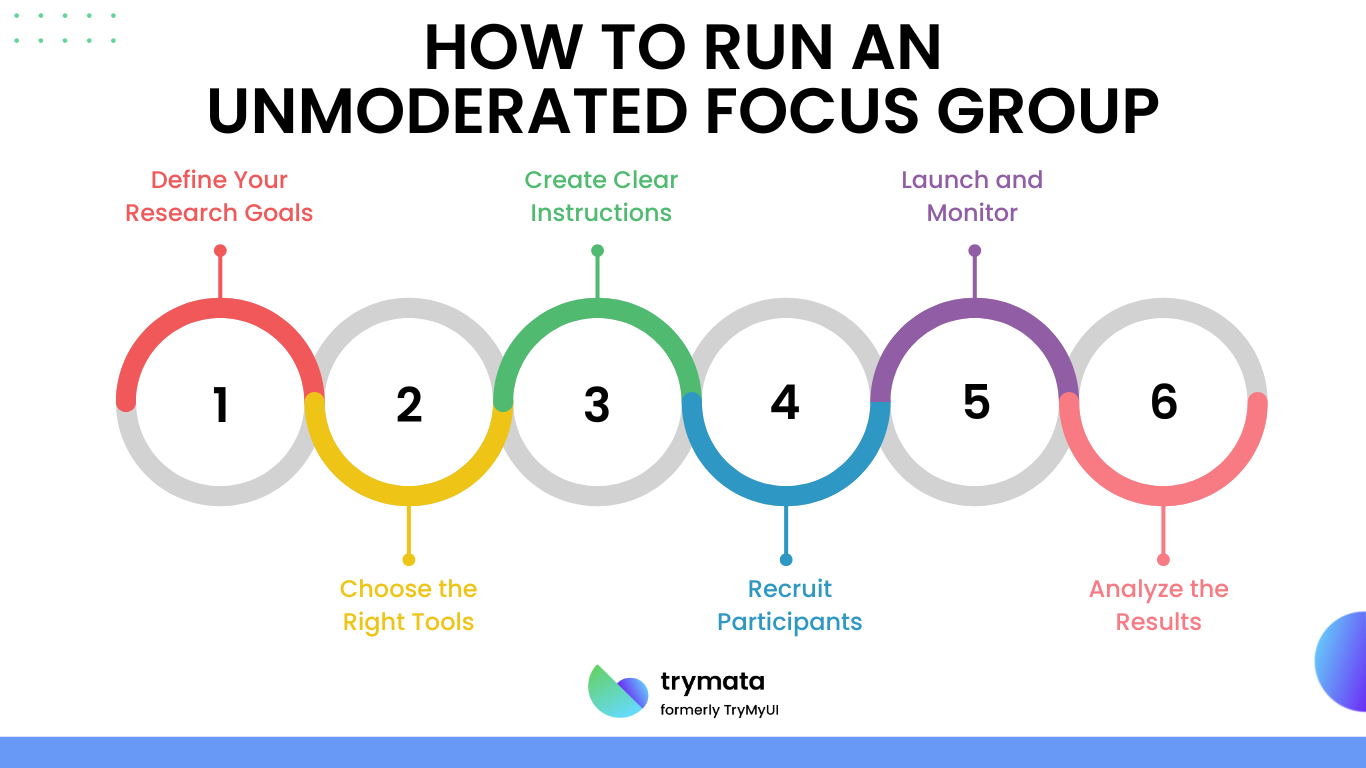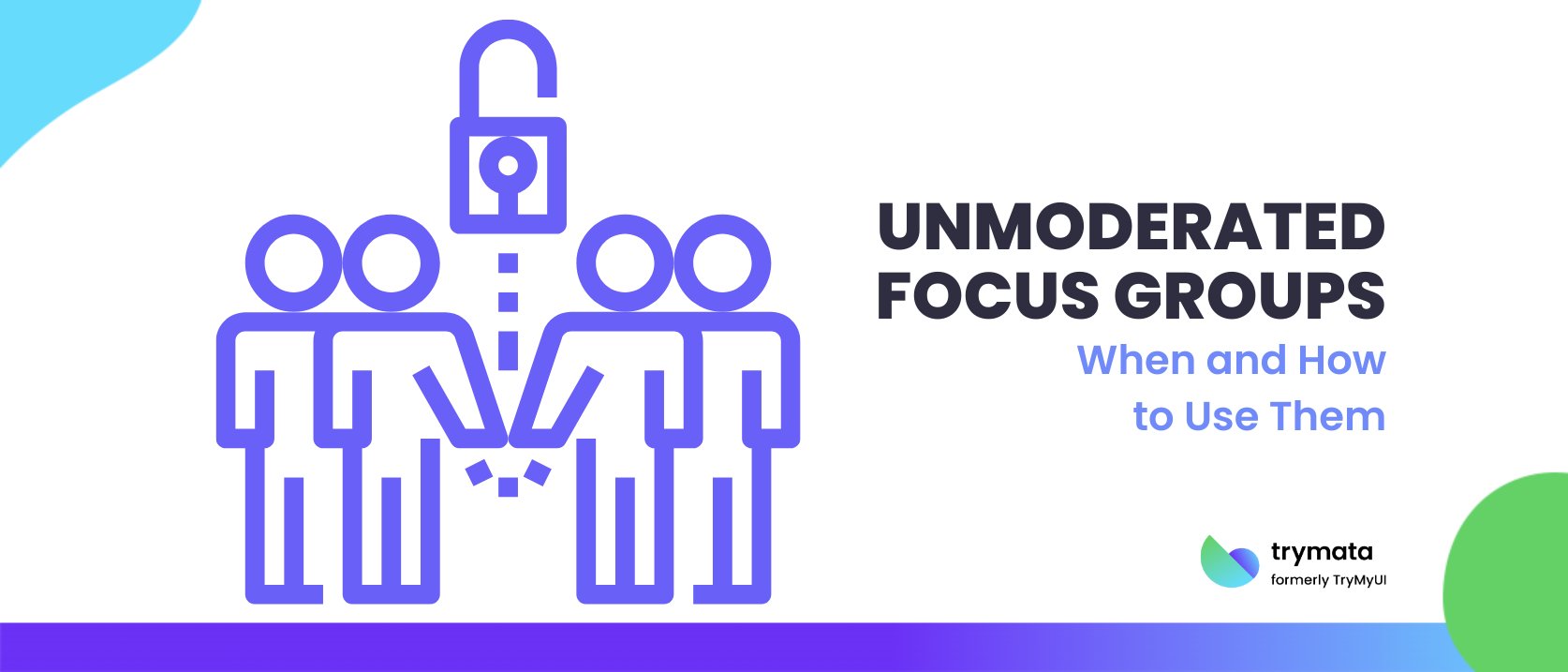Unmoderated focus groups are changing the way businesses conduct UX research. Rather than setting up a traditional meeting with a moderator present, these sessions happen remotely, giving participants the freedom to respond on their own time.
This type of unmoderated testing has become increasingly popular as research studies shift to digital environments. With the right tools and setup, companies can gather feedback from users around the globe without needing everyone in the same space.
Let’s walk through unmoderated focus groups, explain why they’re helpful, how to run one, and how they compare to moderated sessions.
What Are Unmoderated Focus Groups?
Unmoderated focus groups are remote sessions where participants discuss a product, service, or experience without a live moderator guiding the conversation. Everything happens online, often asynchronously. Participants respond to prompts, complete tasks, or talk through their thought process in their own time using a web-based tool or platform.
Because no real-time person is moderating the discussion, users can join from anywhere around the globe. All they need is access to the internet, a browser, and clear instructions on what to do.
Why Use Unmoderated Focus Groups?
Here are a few reasons more teams are leaning into this format:
- Scalability: You can test with multiple users simultaneously, speeding up your research study.
- Flexibility: Participants can join from anywhere at any time, making accessing a more diverse group easier.
- Lower Cost: No need to rent a space or manage live sessions. You save money and time.
- Natural Behavior: With no facilitator watching, users often interact more authentically with your product, which leads to more emphasis on genuine feedback.
It’s especially helpful when your team is distributed or you need to test with users across different time zones.
How to Run an Unmoderated Focus Group
Setting up an unmoderated focus group requires a bit of prep, but once it’s rolling, it practically runs itself. Here’s a simple approach:

1. Define Your Research Goals
Before you begin, know what you want to determine. Are you testing a new feature? Trying to understand consumer behavior? Get specific about your project goals.
2. Choose the Right Tools
Plenty of tools are designed for unmoderated testing, from video response platforms to task-based UX testing software. Make sure your tool supports video/audio recording, easy task assignment, and organized data collection.
3. Create Clear Instructions
Without a live moderator, you’ll need to write out detailed prompts. Whether it’s a set of forms to fill or tasks to complete on a website, be sure your instructions are straightforward and free of ambiguity.
4. Recruit Participants
Invite a mix of users that represent your target audience. The more variety in perspectives, the richer your insights.
5. Launch and Monitor
Once live, monitor participation in case someone gets stuck. Some platforms let you note specific responses or flag them for later review.
6. Analyze the Results
Look for patterns in feedback. Consider how responses might influence your design process, services, or overall business strategy.
Use Cases for Unmoderated Focus Groups
Unmoderated testing works well across many industries and business needs. Common use cases include:
- Website usability testing for e-commerce or content-heavy platforms.
- Testing new features or product flows during the design process.
- Exploring initial reactions to a marketing concept or rebranding idea.
- Understanding how users interpret key messaging or visual hierarchy.
- Validating form designs or the complete customer journey.
It’s also ideal when time is limited, and you need quick, high-quality feedback to influence decisions.
Unmoderated vs. Moderated Focus Groups
So, how do unmoderated sessions stack up against traditional ones?
| Topics | Moderated | Unmoderated |
| Timing | Scheduled, live | On-demand, at participant’s pace |
| Cost | Higher (requires moderator/time) | Lower (less facilitation needed) |
| Flexibility | Limited | High |
| Ability to Probe | High (real-time follow-up questions) | Low (unless prompts are well crafted) |
| Authenticity | May be influenced by moderator | Often more candid |
| Control Over Session | High | Less (depends on participant engagement) |
While moderated focus groups offer more control and flexibility in the moment, unmoderated ones give you scale and reach, which is especially useful for remote focus groups and global teams.
Pros & Cons of Unmoderated Focus Groups
Let’s take a quick look at the trade-offs:
Pros:
- Run at any time from any location
- Greater reach and accessibility
- Reduced cost and scheduling hassle
- Encourages more natural responses
- Ideal for early-stage research and concept validation
Cons:
- Limited ability to ask follow-up questions
- Less control over the direction of discussion
- Requires strong pre-planning
- Some participants may misinterpret prompts without guidance
That’s why it’s important to combine unmoderated sessions with other methods like user interviews, contextual inquiries, or live user testing where needed.
Conclusion
Unmoderated focus groups are not a replacement for every research format but a powerful addition to your UX toolkit. They let you reach users across geographies, gather quick feedback, and influence your design process in real-time.
If your team is juggling multiple projects and looking for flexible testing practices that deliver results, this method might be just what you need.
By giving users the space to express themselves on their terms, you’re not just gathering data, you’re getting closer to what they think, feel, and need.




